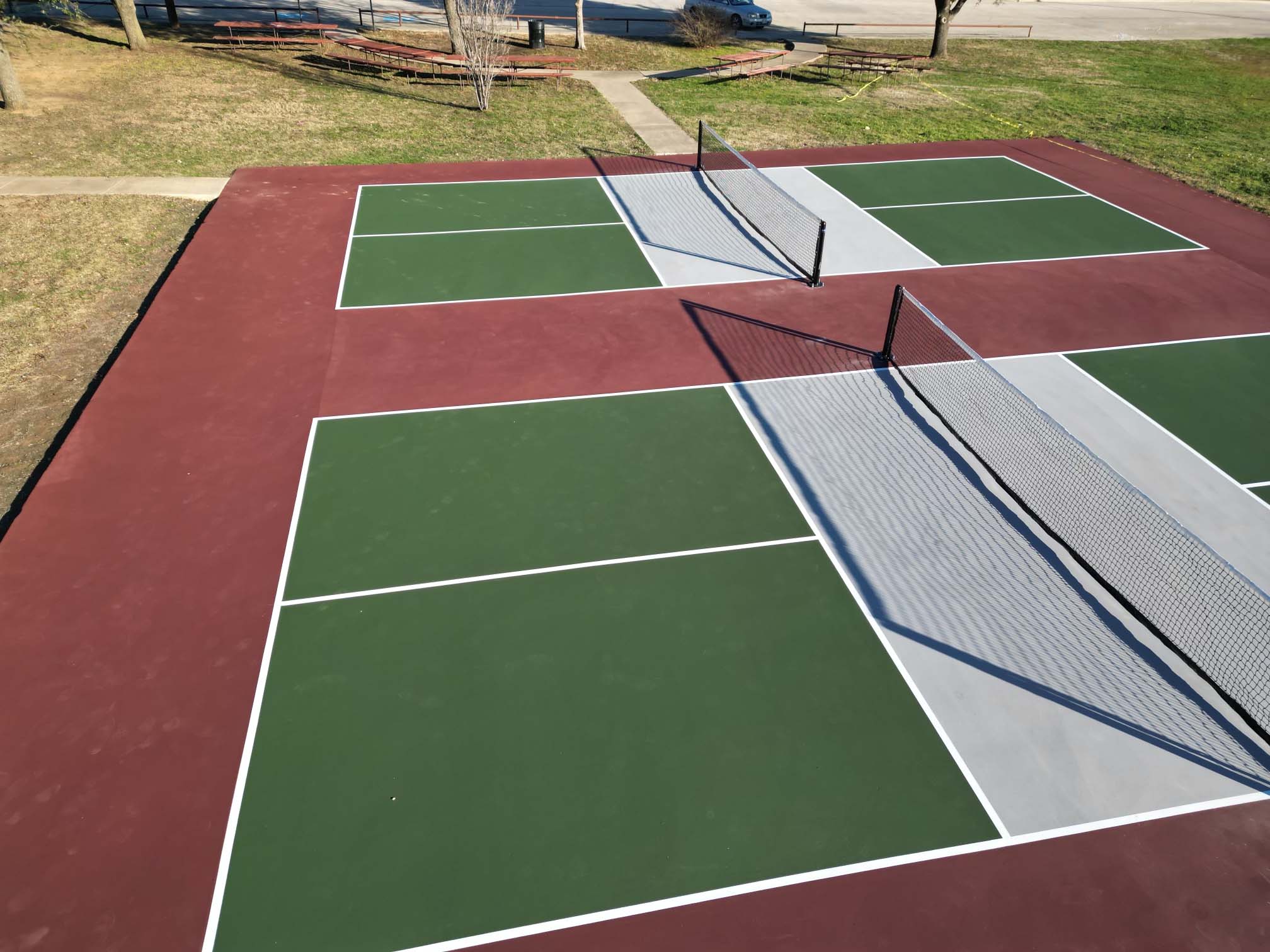Sustainable Practices in Pickleball Court Building You Must Know
As the popularity of pickleball continues to rise, so too does the need for sustainable techniques in court building and construction. The effect of these methods expands far past the court itself.
Choosing Eco-Friendly Products
Selecting environmentally friendly materials is an essential step in the building and construction of sustainable pickleball courts. The option of sustainable materials not just decreases ecological effect but additionally enhances the long life and performance of the court. Key products consist of reused rubber for the surface, which uses outstanding toughness and shock absorption while drawing away waste from garbage dumps.
Furthermore, utilizing in your area sourced materials decreases transport discharges and sustains local economies. Pickleball court construction. As an example, utilizing native hardwoods for fence and seats can give a sustainable aesthetic while making sure durability against the components.
Including permeable products for court foundations can further contribute to sustainability by permitting all-natural water drainage and decreasing overflow. These options not only secure regional communities but also advertise healthier play atmospheres.
Effective Water Drainage Solutions
While the selection of environment-friendly products is vital, executing reliable drain remedies is just as vital for preserving lasting pickleball courts. Correct water drainage not just shields the court surface area from water damages yet also minimizes erosion and runoff, promoting ecological stability.
Effective drainage systems can consist of absorptive paving, which permits water to infiltrate the ground instead than merging externally. This decreases the possibility of standing water, which can result in mold and mildew and various other maintenance problems. Furthermore, including purposefully placed drainage networks and swales can direct excess water away from the court area, making certain a dry playing surface and preventing soil erosion.
Making use of indigenous vegetation in the landscaping around the courts can additionally enhance drain by taking in excess water and lowering drainage. These plants need less irrigation and promote biodiversity, lining up with lasting practices.
In addition, it is essential to routinely preserve the drain system to ensure its long-term efficiency. This includes clearing up debris and tracking for clogs. By prioritizing reliable drain services, pickleball court constructors can significantly add to the sustainability and long life of the facility, ultimately profiting both players and the setting.
Energy-Efficient Illumination Options
As the need for pickleball remains to expand, incorporating energy-efficient illumination choices into court design has actually ended up being progressively important for sustainability. Standard lights systems commonly take in excessive energy, contributing to greater operational costs and environmental effect. Adopting modern-day, energy-efficient innovations is necessary for both brand-new buildings and improvements.
LED (Light Emitting Diode) lights stands out as a leading option due to its durability and power savings (Pickleball court construction). Contrasted to conventional lighting, LEDs utilize about 75% much less energy and can last as much as 25 times much longer, substantially reducing upkeep expenses. In addition, the directional nature of LED illumination decreases light contamination, guaranteeing that lighting is concentrated on the court as opposed to bordering areas.

Sustainable Surface Alternatives
Checking out sustainable surface area choices for pickleball courts has gotten traction amongst players and builders alike. The emphasis on eco-friendly products not only aligns with the growing environmental understanding but also enhances the efficiency and durability of the courts.
One popular alternative is making use of recycled rubber, which can be sourced from made use of tires. This product supplies excellent shock absorption, minimizing the risk of injuries for players while promoting sustainability. Furthermore, modular ceramic tiles made from recycled plastics supply one more feasible option. These ceramic tiles are simple to replace and install, and their flexibility allows for different court configurations.
All-natural turf courts are also becoming a lasting selection, promoting biodiversity and minimizing the warmth island impact. Nevertheless, they call for routine maintenance and water, which might not line up with all sustainability objectives.

Water Preservation Strategies

One more reliable strategy includes the installation of rainwater harvesting systems. These systems accumulate and save rain for use in keeping court surfaces and landscape design. This method not just conserves drinkable water but likewise lowers dependence on local resources.
Furthermore, using drought-resistant landscaping around the courts is crucial. Indigenous plants require less water and are better adjusted to regional environment problems, thus reducing overall water usage. In addition, making use of reliable watering systems, such as drip irrigation, makes sure that water is supplied directly to plant origins, reducing dissipation and waste.
Verdict
Incorporating sustainable methods in pickleball court building and construction considerably contributes to environmental preservation and source performance. Making use of eco-friendly materials, implementing effective drainage solutions, and taking on energy-efficient illumination choices can considerably lower eco-friendly effect. Checking out lasting surface area choices and using water preservation techniques enhance the general sustainability of these recreational centers. By prioritizing these techniques, the building of pickleball courts can align with wider environmental objectives while promoting long life and functionality within areas.
As the popularity of pickleball continues to increase, so too does the requirement for sustainable practices in court building.Picking environment-friendly products is an essential step in the building of lasting pickleball courts. By focusing on energy-efficient lights alternatives, pickleball court producers can add to a more lasting future while fulfilling the needs of stakeholders and players alike.Integrating sustainable surface options not just enhances the efficiency of pickleball courts yet likewise paves the means for applying reliable water preservation strategies.Including lasting methods in pickleball court construction significantly adds to ecological click to read more preservation and source performance.